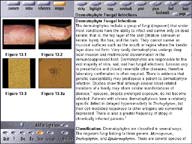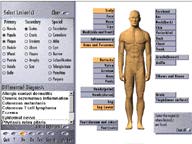Skip to main content

Clinical Dermatology
Thomas B. Habif, M.D.
Mosby-Year Book, Inc., St. Louis, 1996
Cost: $179 personal; $ 699 institutional
Textbook of Dermatology on CD-ROM. by Thomas B. Habif, MD
Published Web Location
https://doi.org/10.5070/D39rg195mdMain Content

Clinical Dermatology
Thomas B. Habif, M.D.
Mosby-Year Book, Inc., St. Louis, 1996
Cost: $179 personal; $ 699 institutional
ReviewThe first two editions of Clinical Dermatology: A Color Guide to Diagnosis and Therapy established this text as a leading practical reference for the diagnosis and therapy of skin disease for use by medical students, residents and practicing physicians. Its clear language, superb clinical illustrations, helpful tables and schematics, and extensive references all make it a clear choice as the recommended text for medical students rotating onto dermatology at our medical school The release of the third edition last year, solidified this excellent reputation and received favorable reviews [1]. When this latest edition was released a CD-ROM version also became available. |
| by |
Claire L. Haycox, M.D., Ph.D. Department of Medicine (Dermatology) University of Washington |
images © 1996 Mosby - Year Book, Inc. text © 1997 Dermatology Online Journal |




